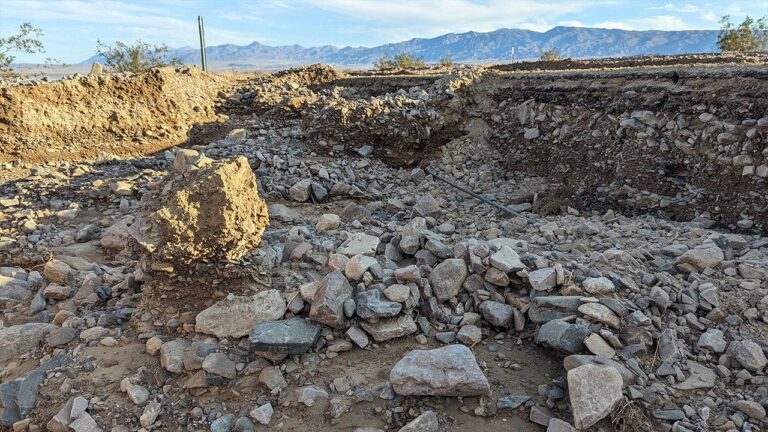Death Valley National Park Faces Prolonged Closure After Tropical Storm Hilary
Death Valley National Park, known as one of the hottest places on Earth, is grappling with a lengthy closure due to the aftermath of Tropical Storm Hilary. Last month, the park, straddling California and Nevada, was hit by a deluge of rain on August 20, receiving more than two inches of rainfall—equivalent to its average annual precipitation.
Nature’s Fury Takes Its Toll
The intense downpour from Tropical Storm Hilary wreaked havoc at Death Valley National Park, leading to the creation of new gullies and the crumbling of vital roadways within the site. To put it in perspective, this year’s single-day rainfall broke the park’s previous record set in August of the previous year, when 1.7 inches fell.
Matthew Lamar, a park ranger, explained the unique impact of rain in this desert region: “Two inches of rain does not sound like a lot, but here, it really does stay on the surface. Two inches of rain here can have a dramatic impact.”
Recovery Timeline Unclear
The road to reopening remains uncertain, with officials suggesting it could take months. The closure began after Hilary, the first tropical storm to hit Southern California in 84 years, swept through the state in August.
Assessments indicate that approximately 900 miles of the park’s nearly 1,400 miles of roads have been affected. Repair estimates hover around $6 million, primarily for the park’s main road, State Route 190, and a portion of State Route 136.
Abby Wines, a park spokesperson, stated, “We don’t have a timeline yet. Caltrans has said they expect to fully open 190 within three months, but they often are able to open parts of it earlier.”
Bright Spots Amidst the Storm
Despite the damage, some cherished sites in the park endured. Scotty’s Castle, a popular visitor destination, remains intact. Additionally, the endangered pupfish at Devils Hole cavern, both young and adult, survived the storm, though sediment likely smothered their eggs. Similarly, the endangered Salt Creek pupfish persevered, offering a glimmer of hope amidst the challenges faced by Death Valley National Park.

